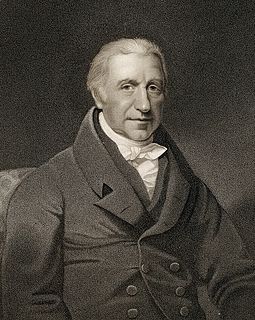This page is based on this
Wikipedia article Text is available under the
CC BY-SA 4.0 license; additional terms may apply.
Images, videos and audio are available under their respective licenses.

Sir John Tenniel was an English illustrator, graphic humorist, and political cartoonist prominent in the second half of the 19th century. He was knighted for his artistic achievements in 1893. Tenniel is remembered especially as the principal political cartoonist for Punch magazine for over 50 years, and for his illustrations to Lewis Carroll's Alice's Adventures in Wonderland (1865) and Through the Looking-Glass, and What Alice Found There (1871).

Oliver Heaviside FRS was an English self-taught electrical engineer, mathematician, and physicist who adapted complex numbers to the study of electrical circuits, invented mathematical techniques for the solution of differential equations, reformulated Maxwell's field equations in terms of electric and magnetic forces and energy flux, and independently co-formulated vector analysis. Although at odds with the scientific establishment for most of his life, Heaviside changed the face of telecommunications, mathematics, and science for years to come.

The East India Company College, or East India College, was an educational establishment situated at Hailey, Hertfordshire, nineteen miles north of London, founded in 1806 to train "writers" (administrators) for the Honourable East India Company (HEIC). It provided general and vocational education for young gentlemen of sixteen to eighteen years old, who were nominated by the Company's directors to writerships in its overseas civil service. It closed in 1858.

Sir Geoffrey Langdon Keynes was an English surgeon and author. He began his career as a medic in World War I, before becoming a doctor at St. Bartholomew's Hospital in London, where he made notable innovations in the fields of blood transfusion and breast cancer surgery. Keynes was also a publishing scholar and bibliographer of English literature and English medical history, focussing primarily on William Blake and William Harvey.

John George Wood, or Rev J. G. Wood,, was an English writer who popularised natural history with his writings.

St George's Hospital is a teaching hospital in Tooting, London. Founded in 1733, it is one of the UK's largest teaching hospitals. It is run by the St George's University Hospitals NHS Foundation Trust. It shares its main hospital site in Tooting in the London Borough of Wandsworth, with the St George's, University of London which trains NHS staff and carries out advanced medical research.

William Babington FRS FGS was an Anglo-Irish physician and mineralogist.

George Joseph Bell was a Scottish advocate and legal scholar. From 1822 to 1843 he was Professor of Scots Law at the University of Edinburgh. He was succeeded by John Shank More.

Sir Everard Home, 1st Baronet, FRS was a British surgeon.

John Green Crosse, FRCS, FRS (1790–1850) was a well-known English surgeon of his day, at the old Norfolk and Norwich Hospital.
Operational calculus, also known as operational analysis, is a technique by which problems in analysis, in particular differential equations, are transformed into algebraic problems, usually the problem of solving a polynomial equation.
Events from the year 1787 in Ireland.
Robert Allot was a London bookseller and publisher of the early Caroline era; his shop was at the sign of the black bear in St. Paul's Churchyard. Though he was in business for a relatively short time — the decade from 1625 to 1635 — Allot had significant connections with the dramatic canons of the two greatest figures of English Renaissance theatre, William Shakespeare and Ben Jonson.

George Hooper was a learned and influential English High church cleric of the late seventeenth and early eighteenth centuries. He served as bishop of the Welsh diocese, St Asaph, and later for the diocese of Bath and Wells, as well as chaplain to members of the royal family.

William Howship Dickinson was a British doctor. He was educated at Cambridge and later trained at St George’s Hospital.

John Heaviside Clark (c.1771–1863) was a Scottish aquatint engraver and painter of seascapes and landscapes. He was also known as Waterloo Clark, because of the sketches he made on the field directly after the Battle of Waterloo.
William Home Lizars was a Scottish painter and engraver.
















